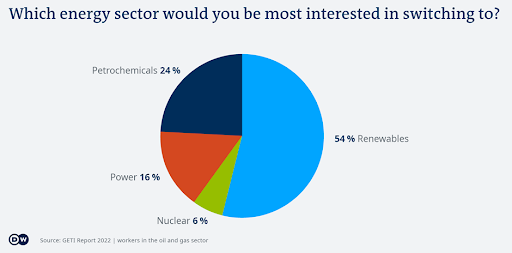The mining industry struggles to meet demand for minerals and metals amidst skilled worker shortage
The rise of the renewable energy sector is creating a shift in the job market that is causing labour shortages in the mining industry. The movement towards renewable energy contributes greatly to combating climate change and reducing carbon emissions, however many industries are feeling significant disruptions as the job market moves away from traditional organisations towards renewable energy firms.
It is estimated that by 2030, renewable energy firms will generate around 10.3 million new jobs and that around 2.3 million jobs will be lost from the fossil fuel sector. As renewable energy becomes the future of energy production, demand for minerals and metals used in renewable energy items have skyrocketed. These metals are used to produce items such as solar panels, wind turbines and electric vehicle (EV) batteries. As a result of this increased demand, the mining industry is struggling to keep up, and this pressure is only further exacerbated by skilled labour shortages.
For the mining industry, meeting increased demand requires the establishment of new mining projects and the continuation/upgrade of existing operations. For this to occur, a significant number of skilled workers including engineers, geologists, and heavy machinery operators, and many more workers, are essential.
This is where the problem lies, the mining industry’s labour force is ageing and the younger workforce is being deterred from the sector. The vast majority of the new workforce prefers to work in ‘greener’ industries, like the renewable energy sector. It’s reported that the renewable energy sector is hiring five times more employees from other sectors than traditional oil and gas firms.
Figure. 1

What is attracting workers to the renewable energy sector?
There are a variety of elements that are working in favour of the renewables sector, including:
Salary
A fast closing salary gap is making it harder for mining operations to lure candidates with high paying jobs, a tactic used over the last two decades. Instead, the renewable sector is compensating workers with handsome salaries, in some cases matching those of miners.
Image
Skilled graduates, fresh out of university or those relatively new to the workforce, are conscious of climate change and see the greener sector as one that stands for change and innovation. In fact, enrolments in mining engineering have dropped by 50% over the last five years in Canada and parts of Europe with Australia also experiencing a dwindling in enrolments.
Job satisfaction
The employee mindset, especially among millennials and Gen Z, is one where having an impact and achieving purposeful work is regarded highly. This makes the renewable industry more appealing than traditional mining.
Strong forecast
Job security is another factor that is drawing employees away from mining, due to the numerous renewable project pipelines in the works. Robust governmental policies, like the European Green Deal, the US Inflation Reduction Act and Australia’s own pro-climate government, are shoring up the future with multi-year projects available.
What can the mining industry do to attract workers?
The mining industry must take steps to improve its recruitment strategies to obtain the workforce needed to meet demand over the next decade.
Culture shift
The industry needs to improve female participation in the sector by focusing on creating a safe and inclusive workplace environment. BHP for instance has taken strides, including the incorporation of a project management office, that will steer progress toward gender balance, creating a safe and respectful workplace, building accountability and capability of leaders, and upskilling their workforce to be ‘active bystanders’. This should be echoed and built upon by others within the industry.
Stronger ESG initiatives
Mining organisations need to continue improving on their sustainability goals, whilst also having their ESG practices assessed by third parties to report on their progress. Actively demonstrating a concern for the environment through the implementation of renewable energy initiatives, electrification of mining machinery and reclamation of retired mine sites would go a long way in reversing the negative stigma currently shadowing the sector.
Creative education initiatives
Investing in education and building joint ventures with education providers should be a top priority for miners. A greater emphasis on targeting soon to be high school graduates, whilst focusing on STEM education and the support of creative solutions, will be significantly valuable in enticing the next generation towards a career in mining.
Expediting foreign labour migration
Skilled workers from other countries could help significantly to relieve the mining industries labour shortage. Now that borders have reopened, miners, state and federal governments need to collaborate to ensure faster processing times for vital workers who are not only going to help support the growth of the sector but also become tax paying residents.
Collaboration
The mining and renewable energy sectors should be looking to collaborate on the issue of labour shortages. Vulnerable supplies due to mining labour shortages will only impact the renewable sector down the track and in turn, slow down the pace of global sustainability. A combined approach to improving employment, securing supply and meeting demand would be beneficial for both parties.
The renewable energy sector is creating a significant labour shortage within the mining industry. The demand for minerals and metals used in renewable energy products is increasing, while the younger workforce is attracted to the cleaner, greener, renewable energy sector. The mining industry must move towards renewable energy by improving its culture, image, reinventing its recruitment strategies, spotlighting its ESG initiatives, seeking offshore skills and collaborating with the renewables sector. The shift towards renewable energy is essential for the future of the planet, and it is up to the mining industry to adapt and evolve if it is to remain a key player in the job market.
28 Feb